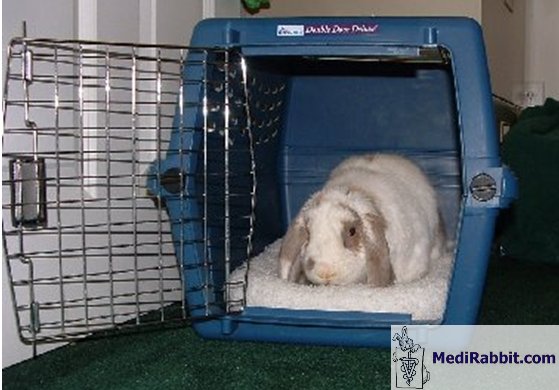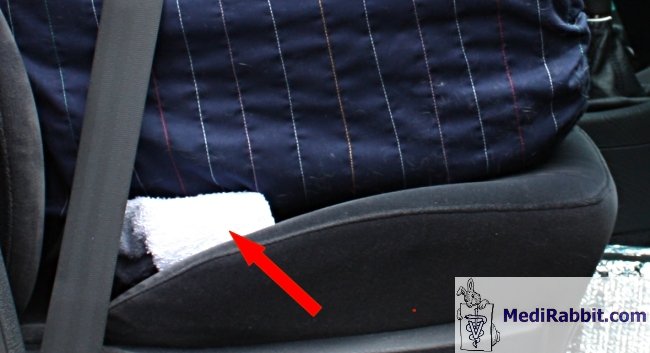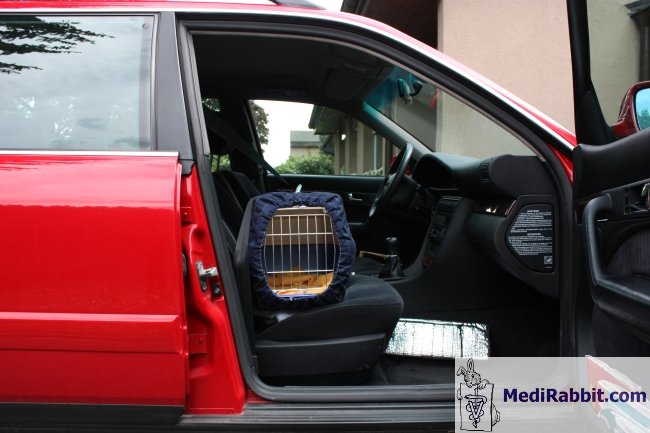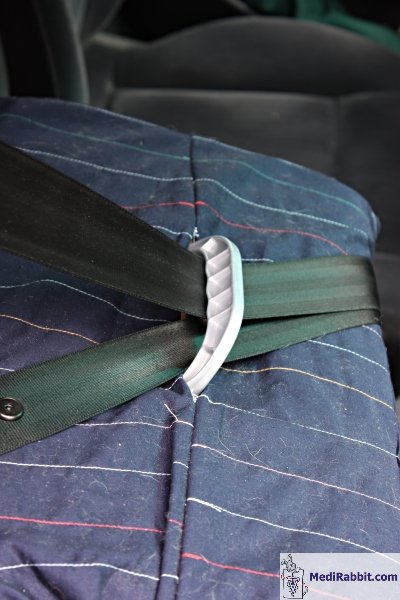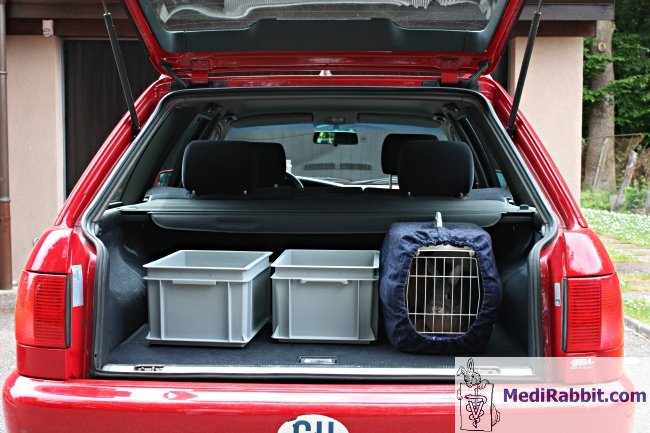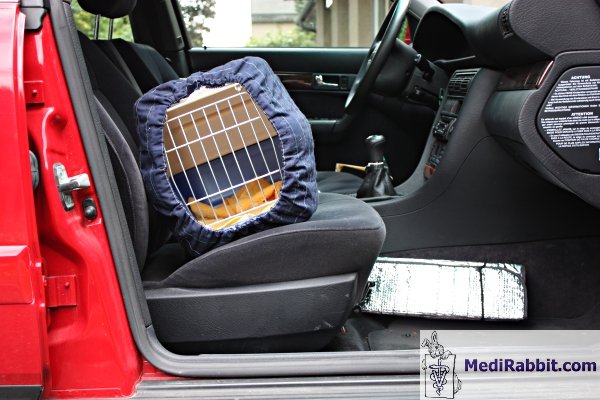Safe transport by car
Esther van
Praag, Ph.D.
MediRabbit.com is
funded solely by the generosity of donors.
Every
donation, no matter what the size, is appreciated and will aid in the continuing
research of medical care and health of rabbits.
Thank you
|
|
Rabbits
are frail animals that are easily stressed and their transport represents a
challenge. The carrier used for transport should be sturdy and protect the animal
from exposure to the environment as much as possible. Allergens, sunlight,
car lights, extreme temperatures, and being subjected to visual observation
by people or other animals could potentially stress a rabbit in a carrier.
The carrier should have a solid bottom, with no grid or holes that can lead
to injury. Nylon or cloth pet carriers, as well
as cardboard boxes, should be avoided entirely since a rabbit can easily make
holes in these materials.
Safe methods of transport Transportation in a carrier
should not take longer than is necessary for traveling from home to the veterinary
clinic. If the trip is long, stops should be scheduled at regular intervals.
The car should be well ventilated and the inside temperature not reach higher
than 24°C (75.2°F). Unless restricted by the veterinarian (e.g., before
surgery), food, hay, and water should be supplied. Fresh vegetables or herbs
can be provided if the trip is long. The
carrier with the rabbit should never be left unattended in a car, even when
parked in the shade. Temperatures inside cars quickly climb to 30 to 50°C (86
to 122°F) on summer days, even when a window is left open for ventilation.
The environment in the parked car can very quickly become fatal to the
rabbit. Several
methods are available for proper and safe transport of rabbits. The following
pictures present safe methods of transporting rabbits in a carrier by car.
Depending on the car, the experience of the owner, and the size and weight of
the carrier+rabbit, safe car transport methods may differ slightly.
NOT SAFE
Thanks
to Duncan, Yara and Stampi, for their help. A big
thank you also to B. Salt and T. Saarony for their contribution. |
e-mail: info@medirabbit.com




